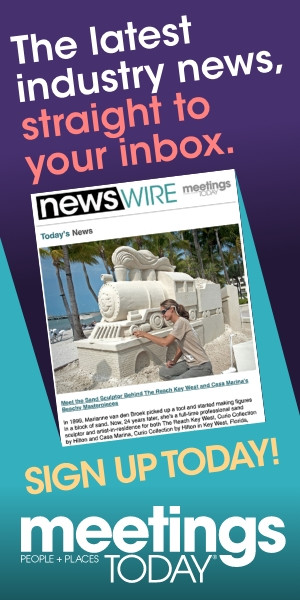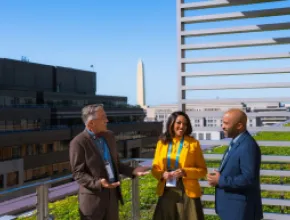Phoenix is an events powerhouse in every sense of the word.
Recent mega events the city has hosted include the 2023 Super Bowl, 2024 NCAA Men’s Final Four and 2024 WNBA All-Star Game, and the momentum continues to build. In 2026, the city will see the NCAA Women’s Final Four and the following year, the NBA All-Star Game.
The city is so well-known for its sports hosting prowess now that it has adopted the moniker, “Championship Valley.”
What makes the city so successful in sports is also what sets it apart for big meetings and conventions, with large groups in a variety of sectors from technology and energy to medical and more, choosing Phoenix as their home.
A lot of concentrated planning and hard work goes into attracting and hosting such high-profile gatherings. Following are four ways Phoenix has established itself as a leading destination for mega events.
A Destination-Wide, Collaborative Approach

Lorne Edwards, chief sales officer for Visit Phoenix, credits much of Phoenix’s success in the mega events arena to a highly collaborative approach applied across the city’s ecosystem, from the DMO to the City of Phoenix, to hotel partners, venues, transportation entities, event organizers and more.
This practice for some of the country’s most popular sporting events has also helped attract major conventions, with recent wins including the Golf Course Superintendents Association of America Conference and Trade Show (more than 10,000 attendees), SEMICON West (more than 10,000 attendees) and Cleanpower Conference & Exhibition (more than 8,800 attendees).
“I think that is unique to Phoenix, because it's something that we always hear from a variety of event organizers, how closely knit our community is,” Edwards said. “It’s why we do mega events so very well, and why we do conventions very well, too.”
Eric George, major events administrator for the City of Phoenix, says the collaborative work for these massive events starts more than a year in advance.
“There are a lot of steps that go into making sure that we're all aligned,” he said. “We stand up a steering committee that consists of 10 different working groups. Each of those working groups are responsible for putting together their operational plans, contingency plans if things don't quite go the way that we expect them to, and, of course, communication plans around those activities."
He also mentioned that other key stakeholders like Visit Phoenix, Downtown Phoenix Inc, transportation partners and others come together to make sure everyone’s on the same page, so that every visitor coming to the destination has a seamless experience.
An Integrated Attendee Experience
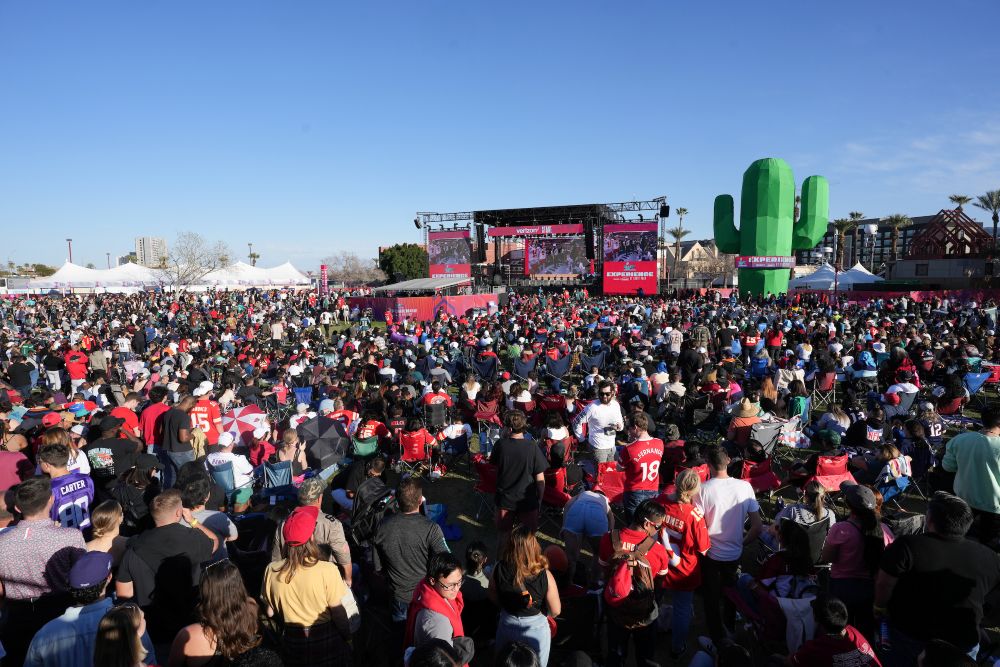
Thanks to this cross-team collaboration, attendees will feel that the event has started from the moment they arrive. This integrated experience encourages excitement for major events for the visitors, and gets locals involved and energized too.
Whether the attendees are at the airport, the hotel, the host venues or walking around downtown, there’s a concerted effort to incorporate the event branding across all touchpoints, adding to the buzz the event creates throughout the destination.
For the WNBA All-Star game, George noted that the city received many compliments on its branding efforts.
“When you were here in Phoenix, the branding was everywhere,” he said. “It was on the light rail trains. It was at the airport. There was a lot of different branding and decor all throughout the city.”
In addition to branding, city partners work hard to make the attendee experience as seamless as possible. In 2023, for example, when the Super Bowl came to town, Phoenix Sky Harbor International Airport had its busiest day in history the Monday after the game. But, according to George, the wait at TSA was never more than 22 minutes.
“That is really is a point of pride, and something that we've continued to message,” he said. “Their mantra now is every day is the Super Bowl, because we're such a popular destination for tourism overall, that really, it doesn't stop.”
The hotels are all in on the attendee experience, as well, participating in those planning conversations well in advance of mega events—and the options aren’t in short supply. Greater Phoenix is home to over 69,000 guest rooms and 4,000 of those are downtown.
“The hotel community sees the value of investing in these events to create that win-win experiences,” Edwards said. “We recently had the WNBA All-Star game in 2024 and we worked with resort partners to make sure that those players and their families coming in had an elevated experience, to make sure that everything was curated in a thoughtful way,” George added. “It really is important to have all those partnerships.”
Easy-to-Navigate Downtown Core
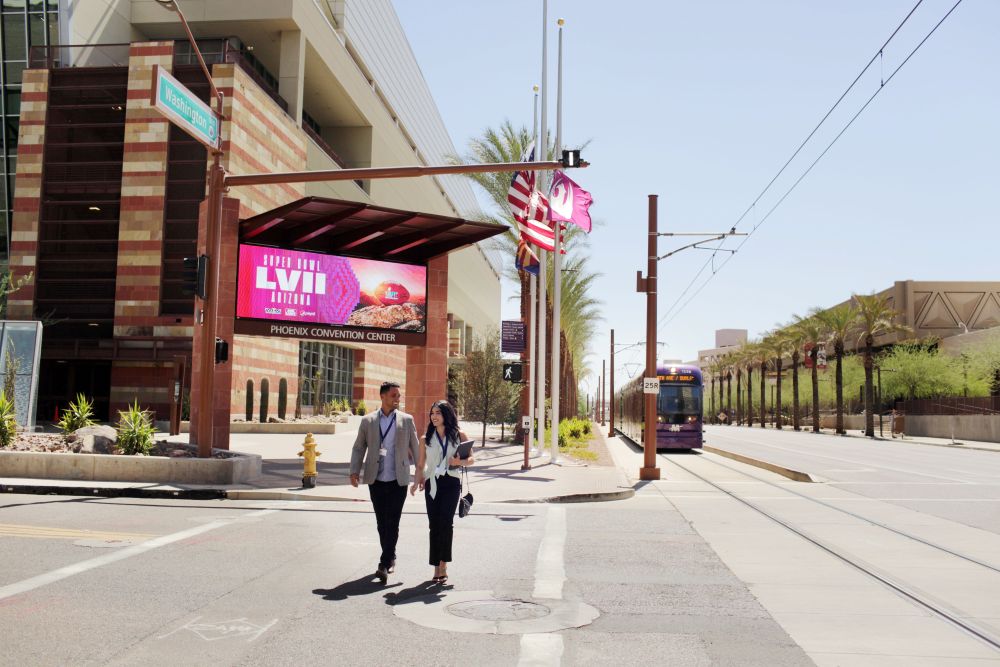
Phoenix has invested a lot into its downtown—approximately $5 billion—which has transformed it into a vibrant, walkable district with major venues within easy reach of each other including the Phoenix Convention Center, PHX Arena (home of NBA and WNBA basketball teams Phoenix Suns and Mercury), Chase Field (home of MLB team Arizona Diamondbacks) and more than 4,000 hotel rooms from properties like the refreshed Sheraton Phoenix Downtown, Hyatt Regency Phoenix, Renaissance Phoenix Downtown, The Westin Phoenix Downtown and others.
“It's so critical to have great hotel partners for events like the college championships, the Women's and Men's Final Fours when you have team hotels, media hotels, staff hotels—all focused within the downtown core or nearby the event venues,” George noted. It’s a big plus for convention attendees, too, eliminating the need for transportation to and from the hotels to the convention center and nearby offsites.
An Attractive Bleisure Destination
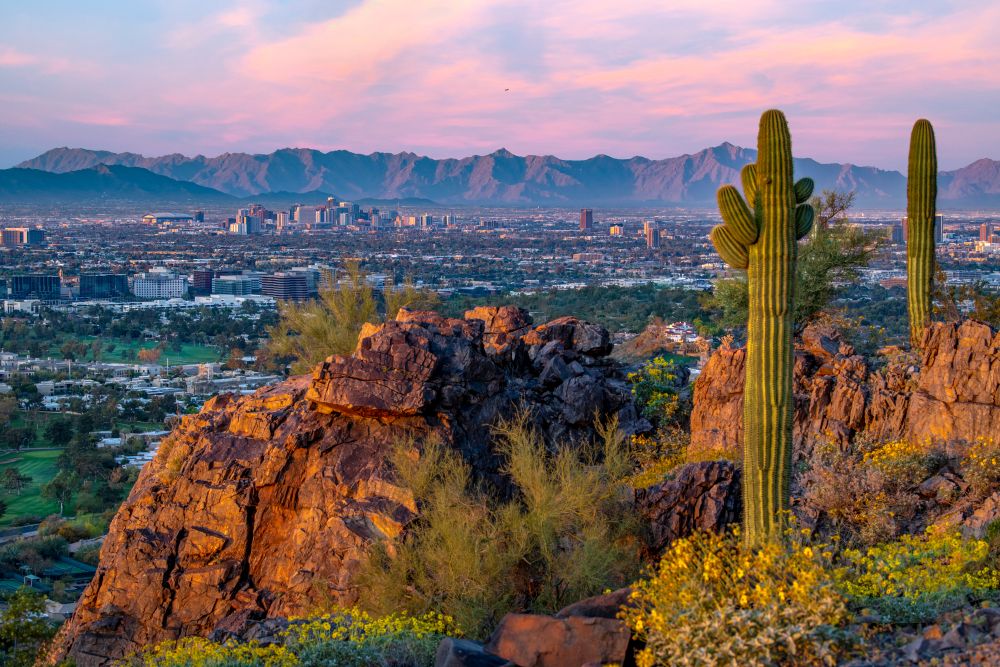
In 2023, the American Hotel Lodging Association reported that 48% of business travelers have extended a business trip in the last year for leisure purposes, and 84% of business travelers are interested in bleisure. And Transparency Market Research predicts the global bleisure travel market is projected to have a compound annual growth rate of 17.8% from 2025 to 2035.
Destinations like Phoenix have plenty to offer in the way of bleisure opportunities that only further incentivize attendance to events—both large and small. Edwards noted that Phoenix can be a jumping off point for exploring some of the state’s greatest beauty, like the Grand Canyon or Sedona.
But, for attendees that don’t have days of extra time, there is plenty of fun to be had in and around the Phoenix area such as hiking, biking, a visit to the Desert Botanical Garden or one of the city’s many museums, and much more.
The Visit Phoenix team is well-versed in connecting event attendees to these opportunities.
“We've got a tremendous amount of content of things to do on our website, which is then connected to the event organizer’s website, so attendees can click on it, see what's happening, stay engaged with all of the special events, entertainment opportunities, things to do like hiking, biking or really exploring the state and immersing themselves in what's happening outside of the venue itself,” he said. “And I think that that really adds to that whole experience, and is another reason why we do so well with these events.”
This article was created in collaboration with Visit Phoenix.


